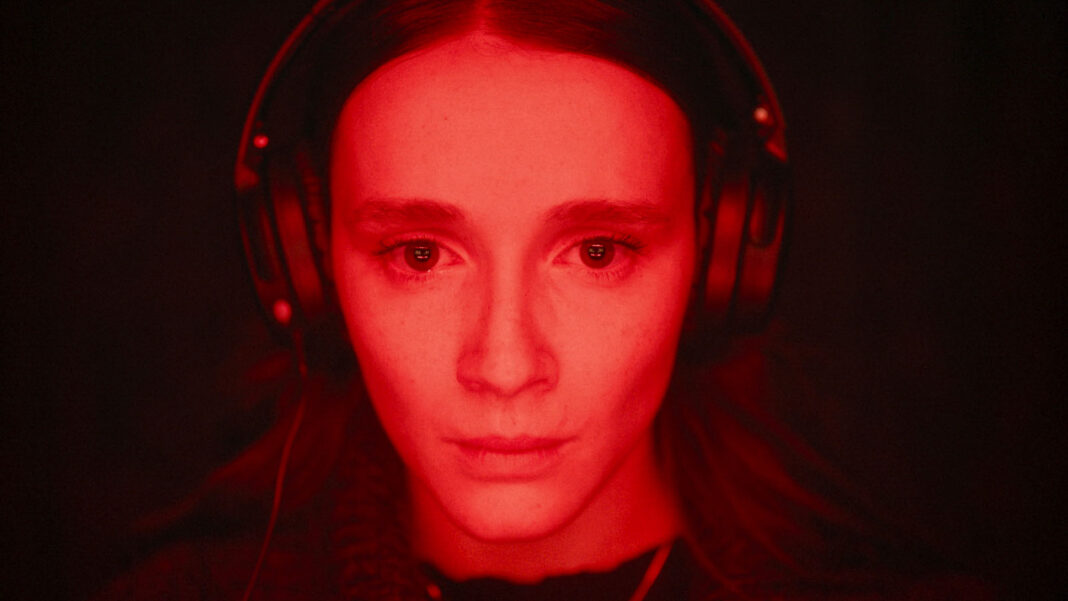 Photo: Nemesis Films
Photo: Nemesis FilmsThe horror genre often invites trepidation, and Pascal Plante’s Red Rooms deftly navigates this fear, offering a chilling exploration of obsession and the grotesque without graphic violence.
A Quick Synopsis
In the gripping world of Red Rooms, we are introduced to Kelly-Anne (Juliette Gariépy), a young woman enthralled by the trial of Ludovic Chevalier (Maxwell McCabe-Lokos), an accused serial killer. As she immerses herself in the courtroom drama, Kelly-Anne’s fascination grows into a deep obsession that leads her down a dark and twisted path. The film explores themes of voyeurism, the nature of violence, and the stark reality of human depravity, all through the lens of Kelly-Anne’s chilling perspective.
The Story Unfolds
From the very beginning, Red Rooms establishes an unsettling atmosphere. The film’s cold elegance immerses the viewer in a world where the horror is more psychological than visceral. Kelly-Anne’s routine is a mix of mundane activities juxtaposed against the backdrop of a harrowing trial, where the accused stands charged with horrific crimes against young girls. The meticulous attention to detail in Kelly-Anne’s character—her lifestyle as a model, her poker prowess, and her interest in cryptocurrency—paints a portrait of a multifaceted individual whose life becomes increasingly entwined with the macabre.
A Study of Characters
Kelly-Anne: The Unlikely Protagonist
Kelly-Anne’s character is a fascinating study in obsession. She is not your typical horror film heroine; instead, she embodies a chilling curiosity that drives her to the trial. Her interactions with other characters, especially her budding friendship with Clémentine (Laurie Babin), showcase her complex personality. While Clémentine is vocal in her outrage against Chevalier, Kelly-Anne remains detached, embodying a quiet intensity that keeps the audience guessing about her true motivations.
Ludovic Chevalier: The Enigma
Chevalier, as portrayed by McCabe-Lokos, is a haunting presence. His demeanor during the trial, marked by exhaustion and resignation, evokes a sense of unease. The film cleverly refrains from depicting the violence directly, instead allowing the viewer’s imagination to fill in the horrifying gaps. This choice amplifies the psychological tension, compelling audiences to confront their own discomfort with the subject matter.
Cinematic Elements
Plante’s direction is a masterclass in restraint. The choice to keep the violence off-screen serves to heighten the film’s impact. Instead of blood and gore, we are presented with a narrative that forces us to grapple with our voyeuristic tendencies. The cinematography by Vincent Biron captures the stark beauty of Montreal, contrasting the chilling events unfolding within the courthouse.
Themes of Obsession and Voyeurism
At its core, Red Rooms delves into the dark obsession that can arise from a desire to witness the horrific. Kelly-Anne’s character embodies this theme, as she becomes increasingly fixated on the trial and the man at its center. The film prompts the audience to reflect on their own consumption of media and the fine line between curiosity and complicity in the voyeuristic gaze.
Conclusion
In conclusion, Red Rooms stands out as a compelling entry in the horror genre, not for its explicit violence but for its exploration of the unsettling nature of human curiosity. The film challenges viewers to confront their own discomfort with the darker aspects of reality while leaving a lasting impression that lingers long after the credits roll. It is a haunting reminder of the horrors that exist both on-screen and in the world around us, making it a must-watch for those willing to look closer.
Frequently Asked Questions
1. What is Red Rooms about?
Red Rooms follows Kelly-Anne, who becomes obsessed with the trial of Ludovic Chevalier, an accused serial killer, exploring themes of voyeurism and human depravity.
2. Who directed Red Rooms?
The film is directed by Pascal Plante.
3. Where can I watch Red Rooms?
You can find Red Rooms available for streaming on platforms like Netflix and Prime Video.
4. Is Red Rooms a violent film?
While the film deals with violent themes, it refrains from showing explicit violence, focusing instead on psychological horror.
5. Who stars in Red Rooms?
The film features performances by Juliette Gariépy as Kelly-Anne and Maxwell McCabe-Lokos as Ludovic Chevalier.
6. What themes does Red Rooms explore?
The film explores themes of obsession, voyeurism, and the nature of violence in society.
7. What is the cinematography like in Red Rooms?
The cinematography by Vincent Biron captures the cold beauty of Montreal and effectively enhances the film’s eerie atmosphere.
8. How does Kelly-Anne’s character develop throughout the film?
Kelly-Anne evolves from a curious onlooker to someone deeply obsessed with the subject matter, highlighting the psychological toll of her interest.
9. What makes Red Rooms stand out in the horror genre?
Its unique approach to horror, focusing on psychological elements rather than graphic violence, sets Red Rooms apart in the genre.
10. What is the overall message of Red Rooms?
The film serves as a commentary on the human fascination with violence and the importance of confronting uncomfortable truths in our world.
Tags: Red Rooms, horror film, psychological thriller, Pascal Plante, movie review, Juliette Gariépy, obsession, voyeurism, film analysis, CineRecap

